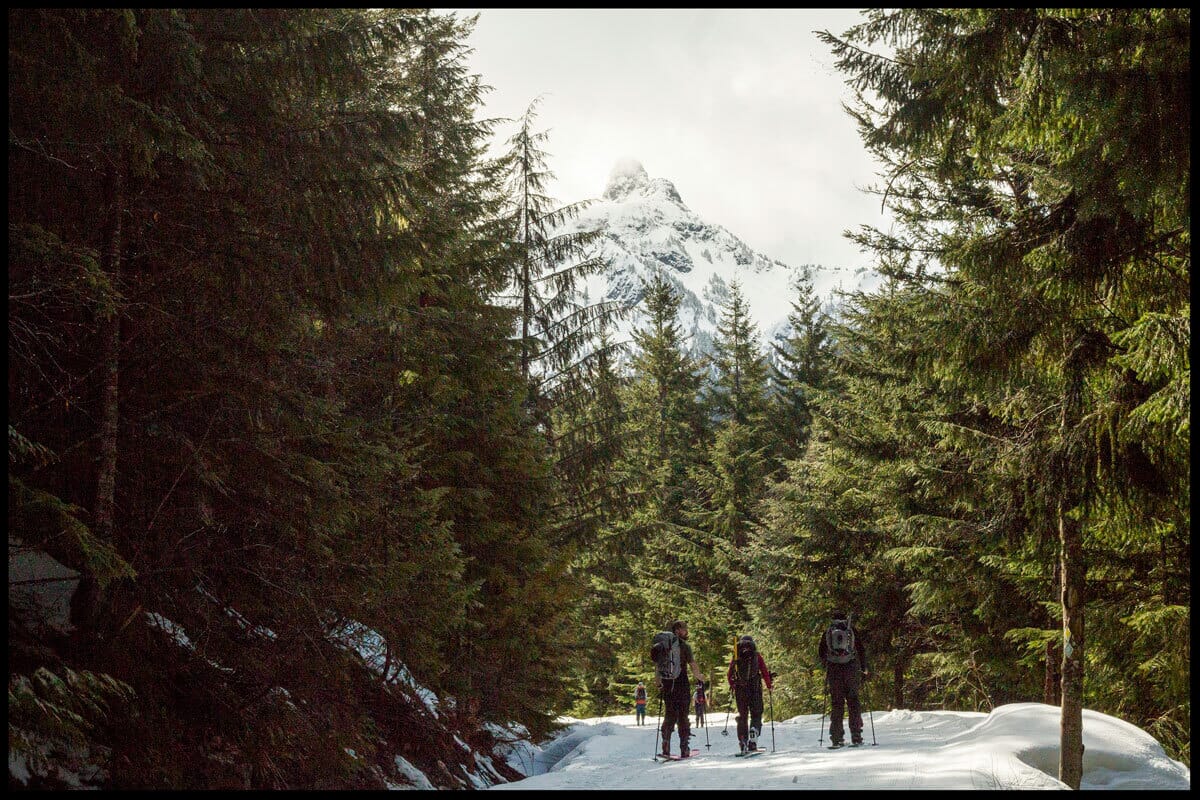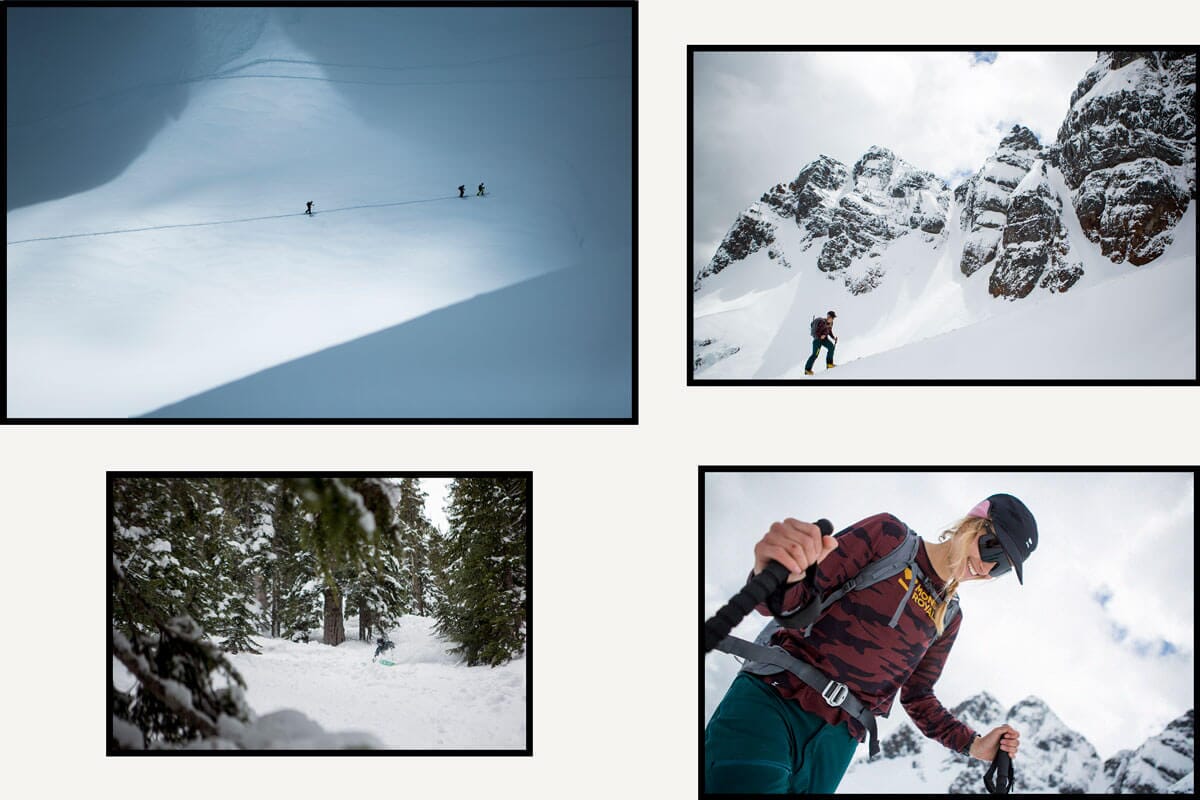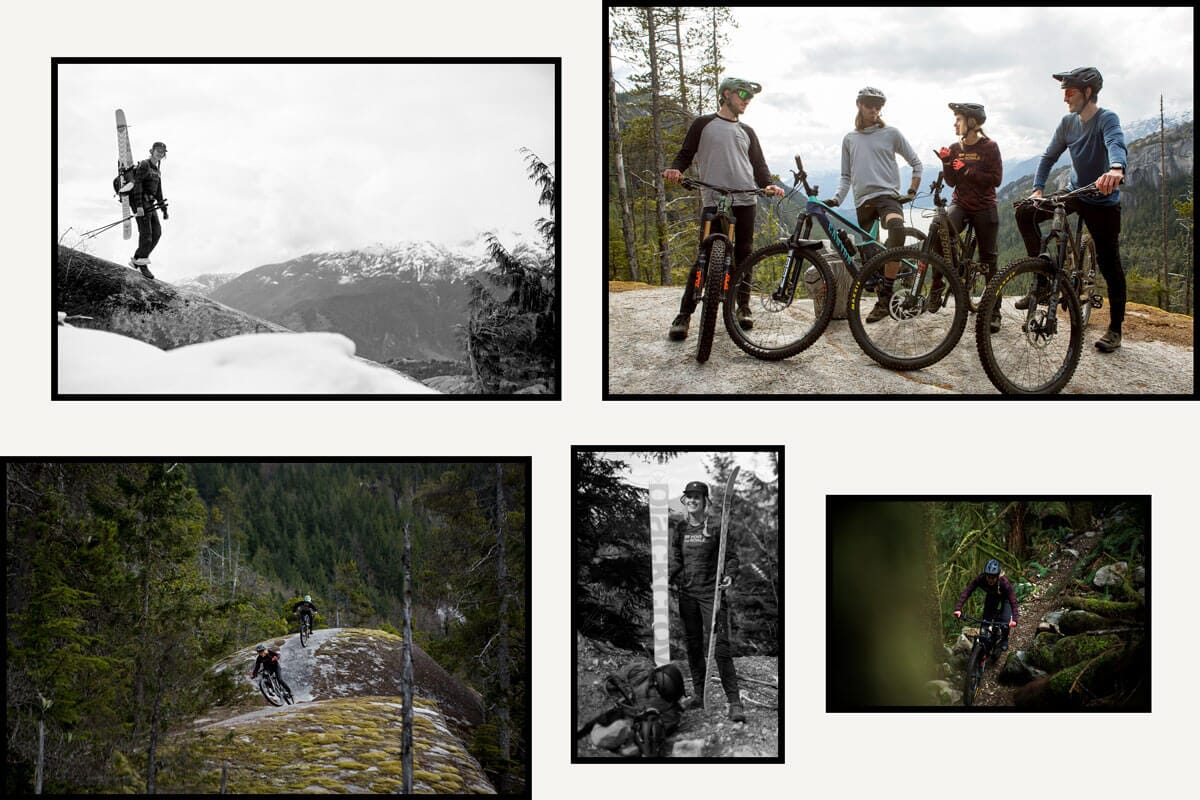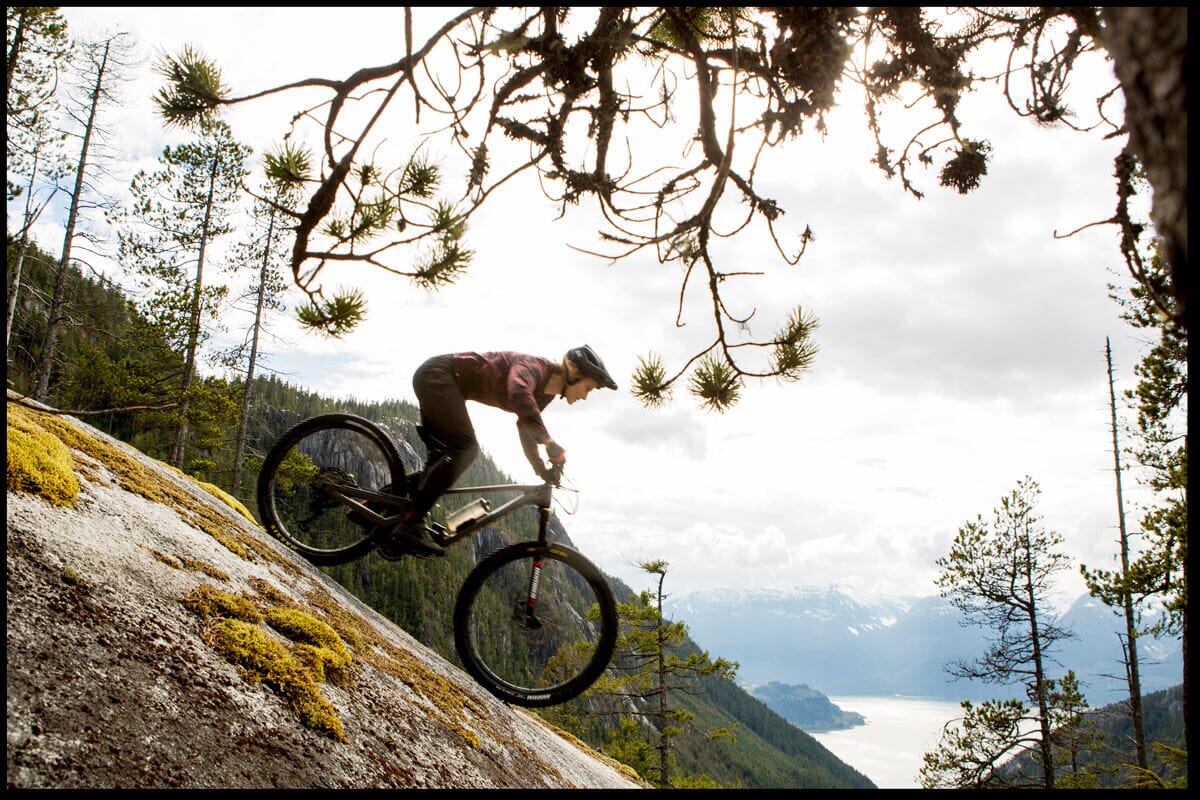
EARTH DAY 2022 WITH CELESTE POMERANTZ
I’ve always gone big on Earth Day. On top of it being a day of celebrating the planet and spending time outside, it’s also my birthday, so naturally, it’s just a fun day all around.
This year I reached out to seven of my closest multi-sport loving friends and we made our way via ski tour to a zone in the Squamish backcountry.


From multitudes of couloirs to tree skiing, to gentle rolling glaciated terrain, it’s a spot that really has anything you could want. Unfortunately, once we arrived, a separate group had been involved in an avalanche in one of the couloirs (everyone was fine), and due to how warm the day already was and with lots of instability present we made the tough decision to dial it back and not pursue anything crazy. A gorgeous morning nonetheless.

“Where the snowline ends, the dirt begins”
“Where the snowline ends, the dirt begins”

Everyone was in a fantastic state of mind once we got to the bottom of the ski and transitioned to the second part of the day. What’s special about this area is that where the snowline ends, the dirt begins. It opens up to this spectacular area of unique granite rock and treelined trails for both mountain biking and trail running alike. Half the crew opted to trail-run back to our start point, and the rest of us opted to mountain bike down. The ride was unreal, trails this time of year are always in perfect condition. It was an incredible day surrounded by truly special people in the outdoors.

Last year, I participated in Climb for Climate with a group of friends to raise money for Protect our Winters, per metres of elevation gained on a ski tour to mountain bike mission in Squamish, BC. I wrote some words on that day as well. This year, however, I wanted to combine a multi-sport adventure with science communication to educate as many people as I could. This is extremely important to me, as a master’s student at the University of British Columbia (UBC) in Vancouver focusing on alternative energy. One of the most important lessons I have learnt during this degree is that systematic change cannot and will not happen without a deep understanding of the greater issue and each sector’s impact.
Here are some Earth Tips each individual person can take to reduce their carbon footprint and make a significant difference:
Earth Tip #1: Reduce your meat intake
A massive way you can reduce your carbon footprint is by limiting your meat consumption. In North America, food consumption accounts for nearly 30% of an individual’s carbon emissions and 60% of this is from meat consumption alone. Growing animal feed, methane emissions from the animals and processing and transporting meat all amount to a massive quantity of fossil fuel emissions. A study done at UBC on carbon footprint misconceptions found that going plant-based for one year was equivalent to recycling properly for a decade in carbon emission reductions. I am not saying that everyone needs to cut out meat from their diet altogether – this is difficult and sometimes not possible for some people. I suggest instead, reflecting on where your food is coming from – eat locally sourced meats and veggies and maybe even consider having a plant-based day once a week.
Earth Tip #2: Offset your travel
The single largest thing you can do to reduce your footprint is to stop flying altogether. Most people who are lucky enough to travel for leisure probably won’t stop doing this, especially since we’re all finally allowed to travel again, others who travel for work or other essential reasons are in the same boat. So how can someone reduce their carbon emissions? Carbon offsets. Carbon offsets basically work by giving the fossil fuel consumer (traveller) the option to purchase into programs (like efficient cookstoves, tree planting, renewable energy projects, etc) that promise to offset the amount of carbon you’re emitting. Essentially, you can pay per unit of emissions you’re releasing and hypothetically your money is going somewhere impactful. The problem with carbon offsets is that they’re often illegitimate. The first carbon calculator was invented by the oil and gas industry to put more pressure on the individual person rather than on themselves. Regardless, you have no idea if the money you’re investing in that tree planting initiative, for example, is using diesel generators on the other side to house, transport and feed their planters. That’s why I suggest investing and donating to companies that are implementing and encouraging systematic change such as energy and environmental policy initiatives. Or companies focused solely on bringing renewable energy or energy efficient solutions to consumers, communities, and cities. Here are three companies I believe are actively doing this: CATF, Carbon180, LESS.
Earth Tip #3: Quality Over Quantity
Did you know that it takes 2700 litres of water to produce one cotton t-shirt? Or that annually on an international level it costs nearly 6 trillion litres of water per year to produce synthetic fabrics? Wool produces more than half the amount of carbon emissions annually than polyester and lasts a hell of a lot longer. So, think about what you’re purchasing, what purpose does it serve, what is it made from, and will it last? By choosing brands that use sustainable materials and prioritize longevity you can reduce your carbon emissions massively.
If you’ve made it this far, thank you. I hope I’ve inspired you to make choices in your life that not only impact the planet we live, breathe, and play on but benefit yourself and others too!
Cheers,
Celeste Pomerantz














